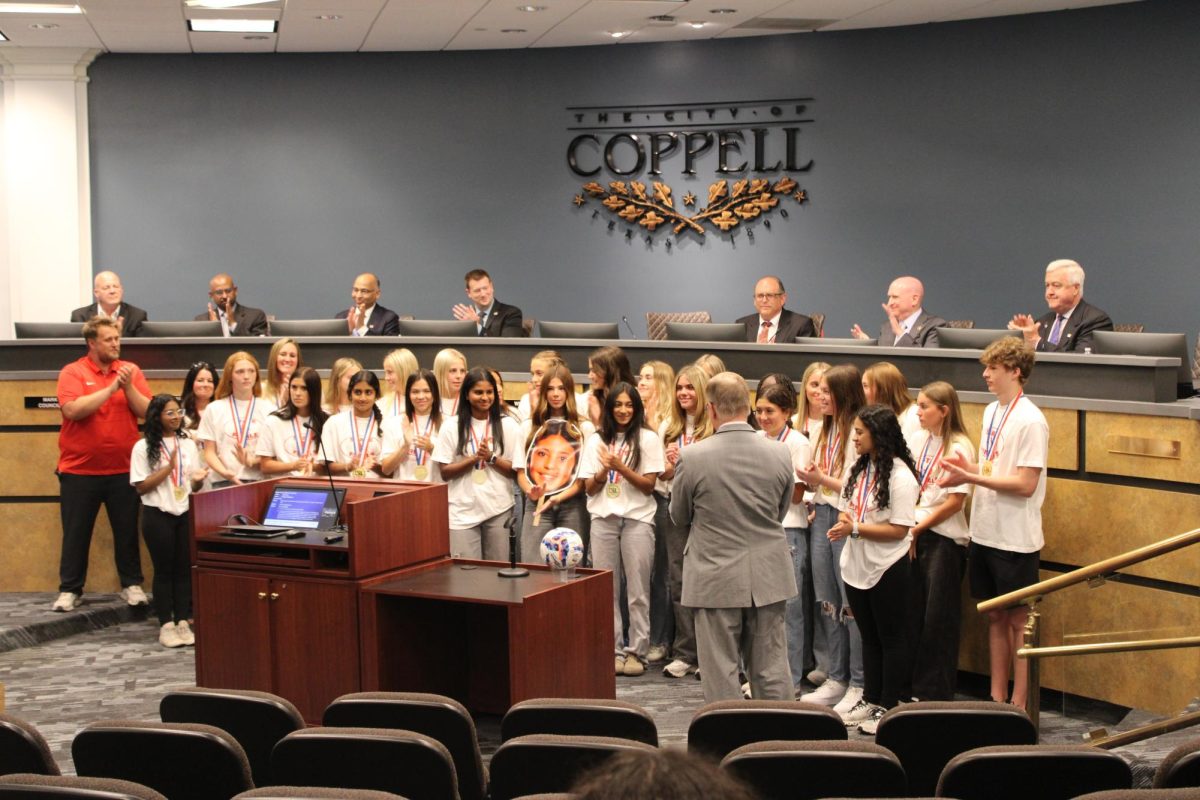By Nikki Dabney
Staff Writer
A lot of changes come with May testing: modified schedules, off-campus lunches and, of course, no bells. Many students and teachers have expressed their preference for no bells and their desire for a permanent change.
“With no bells, the atmosphere is more relaxed and laid back,” senior Nitu Sharma said. “I’m not worried about having to rush to my next class or wondering why the bell didn’t go off when it was supposed to.”
While students enjoy having more freedom, teachers like the fact that they are able to have more control over their class and release their students.
“I like being able to finish points without my students rushing to the door as soon as the bell rings,” social studies teacher Samuel Shropshire said.
With so many students and several modified schedules, such as the SPUR or pep rally schedule, it can be difficult to remember what times classes get out and to keep track of the time, but teachers and students do not think it would be a problem.
“Interruption wise, bells are just annoying,” AP Literature and Composition teacher Kim Pearce said. “Granted, I can sometimes go past the bells, but I will learn to adjust. Students are very good clock watchers, so they will tell us when it’s time to go.”
Changing to a no bells schedule would also affect administration. The bells are programmed through an intercom system in the front office. During a different schedule, someone has to plug in a different number or ring it by hand.
“The actual mechanics of setting the bells would be easier,” associate principal Michelle Kellen said. “There would be a quieter atmosphere, and kids would probably stop lining up at the doors, but teachers could take advantage of the situation by letting kids out early and tardies could be a problem. Teachers and students would just have more responsibility.”
Pearce has one solution to minimizing some of these issues.
“There could be a bell in the morning to get everyone started and one at the end of the day so everyone would be released at the same time.”
Schedules and time limits not being regimented and controlled by a machine also promote more responsibility for students.
“You don’t have bells in college,” Pearce said. “And in most of your careers bells don’t regulate when you go to lunch or take a break. We’d be training kids to be good managers of time.”
While most students and teachers are on board for the change, some still prefer having bells.
“I like bells better because it keeps you on time, and you’re not at the teacher’s mercy to let you out,” senior Meredith Groom said. “Having no bells stresses me out more because you don’t know much time you have and not all teachers are as lenient. I went to [CMS] North, which didn’t have bells and I like this better because it is more structured.”
While it appears that a majority of the school is interested in having no bells, some feel differently, so measures would need to be taken to figure out what is best for the school and how the change can be implemented.
“Changing to no bells would start with having discussions with school leadership, like Mr. Jasso,” Kellen said. “We would have to talk about if there are any possible safety issues, see what his thoughts are and figure what the change would look like.”









